MESOPOTAMIA: THE FIRST CHAINS DISCOVERED
Some of the oldest known chains were discovered in the 1920s in southern Iraq, at the Royal Cemetery at Ur. They were found on the body of Queen Puabi, along with a breathtaking collection of earrings, rings, belts, chokers, and hair jewelry, with strands of beads covering her torso, and an elaborate headdress, dating back to approximately 2550 BC.
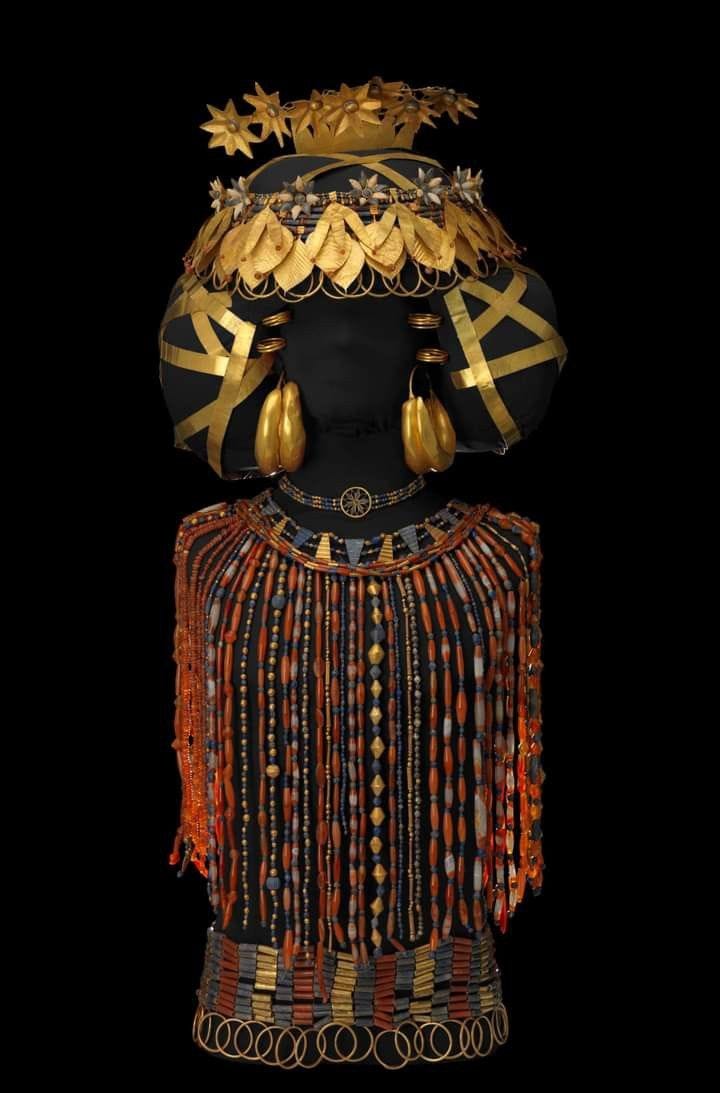
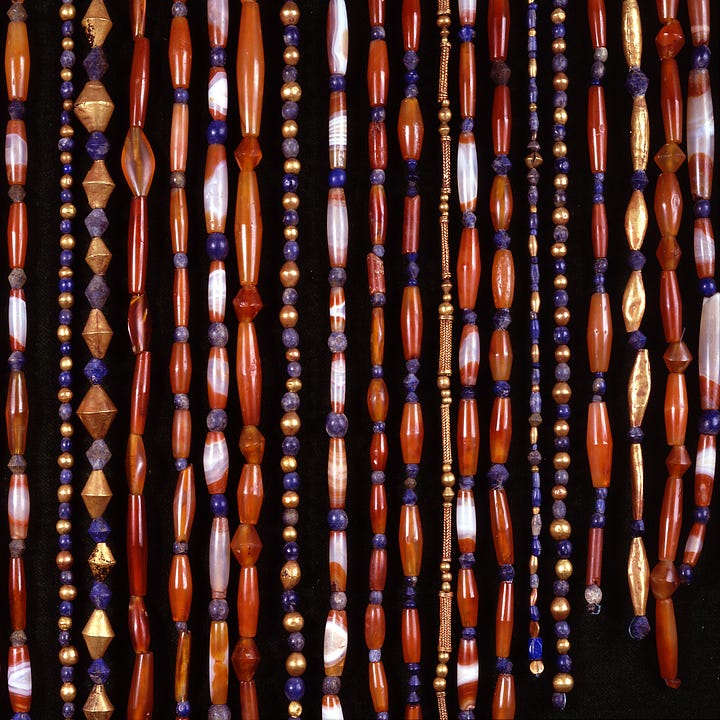
LOOP-IN-LOOP STYLE CHAIN
The figure-8 loop-in-loop style chain dates back to the early Bronze Age (3300 BC – 1200 BC) in Ur, the current-day region of Iraq. It also appears across the Islamic world, Ancient Egypt, India, Greece, and Etruria (Italy), suggesting it was either invented independently in each location or was widely spread early on via trade routes. It was popularized during the Roman era and remained a common style through to the end of the Middle Ages.
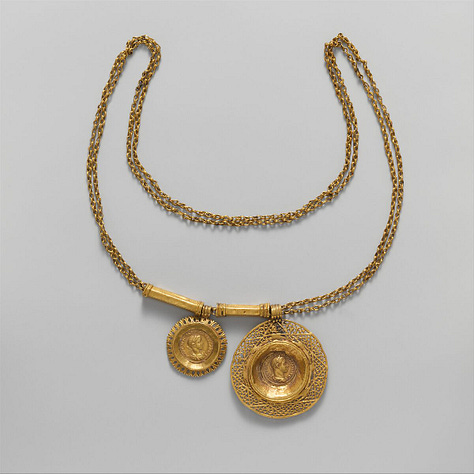
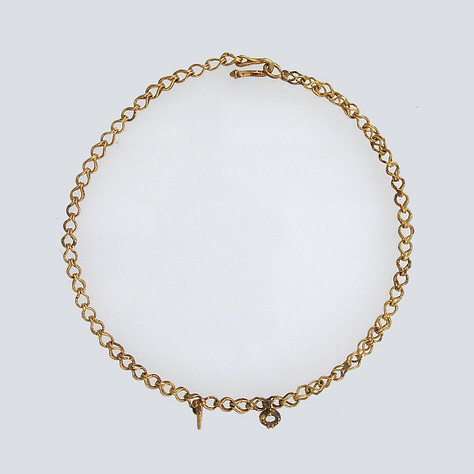
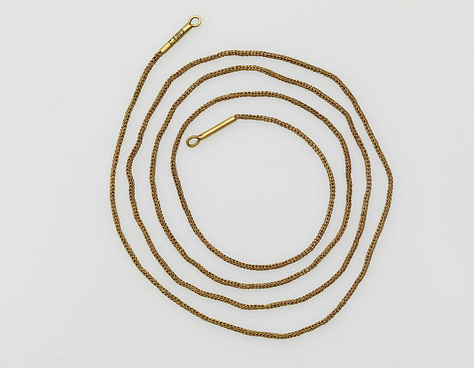
ANCIENT EGYPT: CIRCA 2500 BC – 500 AD
In addition to the chains found in Mesopotamia, Ancient Egypt was another treasure-trove of this incredible style.
Gold was revered as the skin of the gods, specifically attributed to the sun god, Ra. Because of its connection to the eternal and divine realm, it adorned pharaohs, temples, and tombs, signifying divine status and ensuring protection in the afterlife.

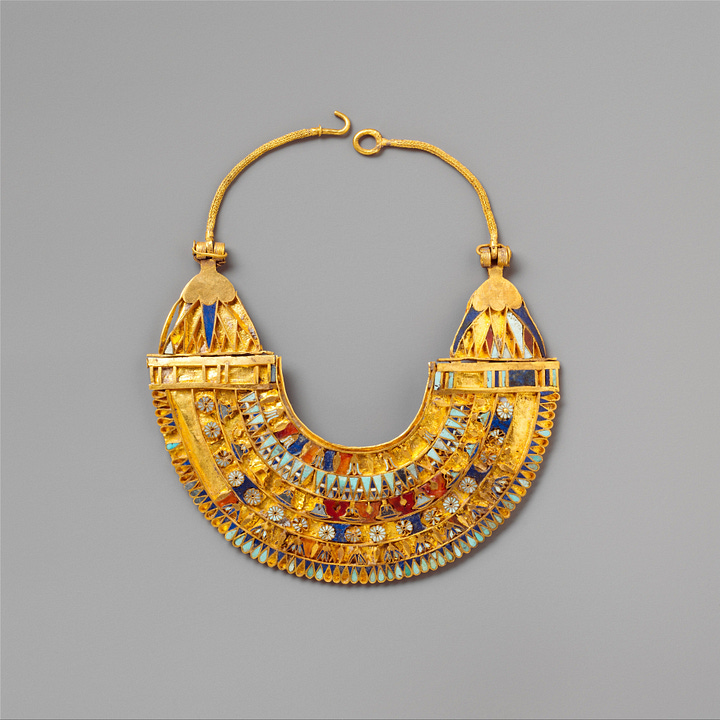
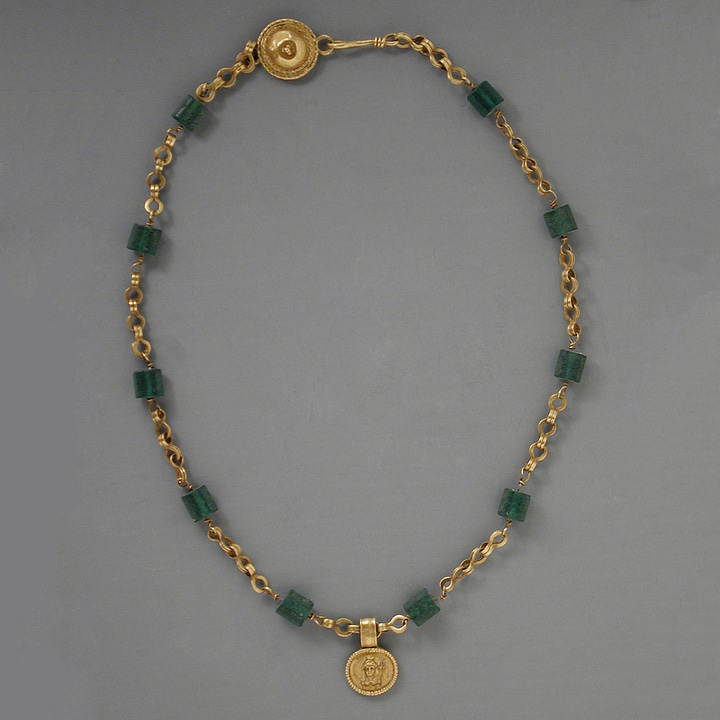

Chains like these were worn by the upper class, not only as signifiers of their status and wealth, but also for their alleged apotropaic powers, which meant they were believed to hold power to protect the wearer from disease, evil, and danger.
While it’s possible these chains once also existed in silver, little to no evidence has been found because of silver’s corrosive properties. Ancient Egyptians revered silver more than gold, and associated it with the moon, ritual purity, and the bones of the gods. So, it’s not a far stretch to assume they also made this chain in silver.
BYZANTIUM & EARLY EUROPE: 300–1453 AD
Next, we find ourselves in the Ancient civilizations of the Byzantine Empire, which encompassed Greece, Turkey, Italy, Albania, Bulgaria, Croatia, Serbia, and parts of North Africa and the Middle East.
Chains continued to develop off the loop-in-loops style, evolving into more elaborate weaving patterns. With innovations in the jewelry world, more complex, stylized, and symbolic designs were now possible.
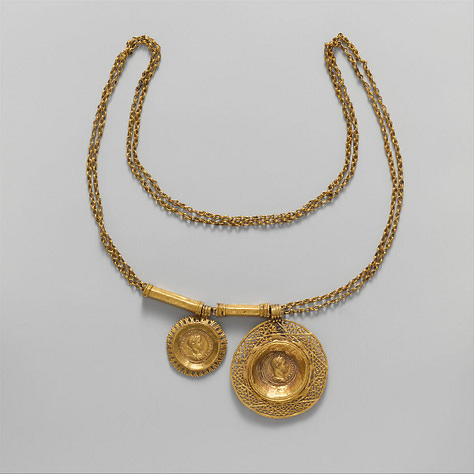
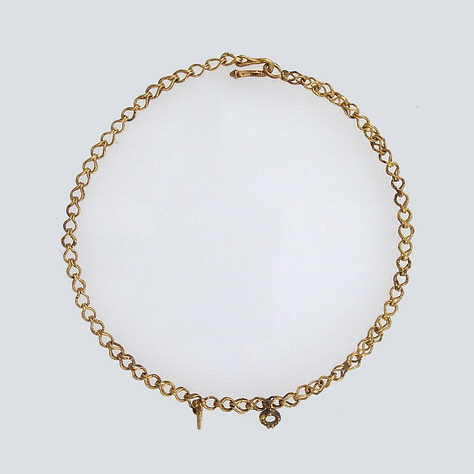


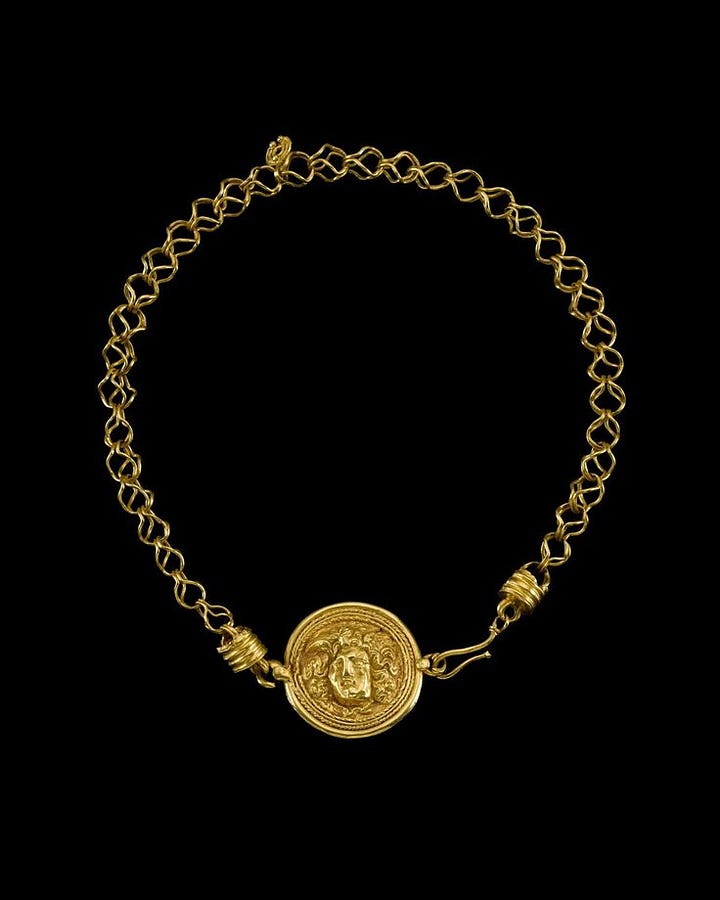
The Ancient Greeks developed wire setting, which made it possible to set gemstones like amethyst, garnet, emerald, and glass, adding to the richness of the designs. Pearls and other gemstone beads were also commonly added as beautiful additions.
Religious pendants became popular throughout the Byzantine Empire. Elaborate crosses and medallions of Christ, Mary, and the saints were worn in abundance. Mini relics and talismans containing scriptures were also common pieces, often worn by the clergy.
New styles were also being developed, adding a fresh variety to the common loop-in-loop style. Larger motifs were joined together with smaller jump rings, creating link-style chains shown in the first three images below.


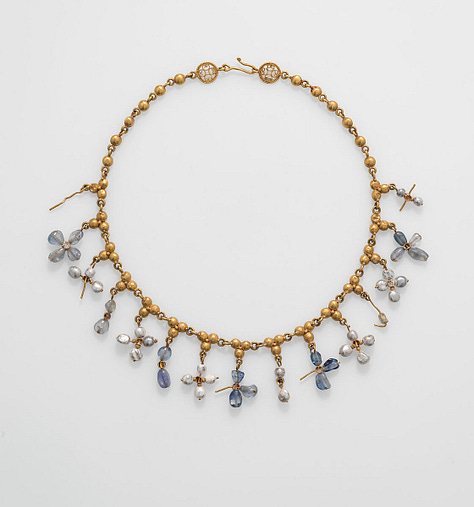
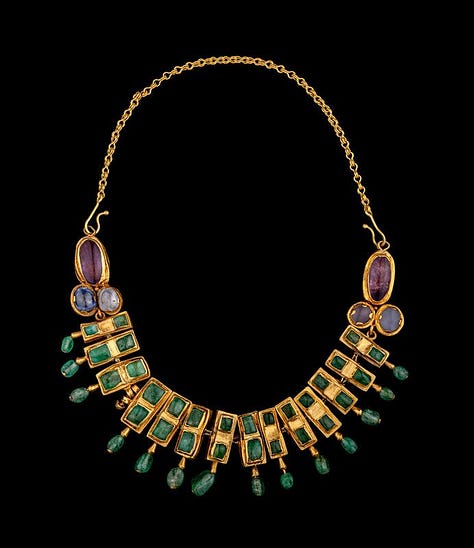

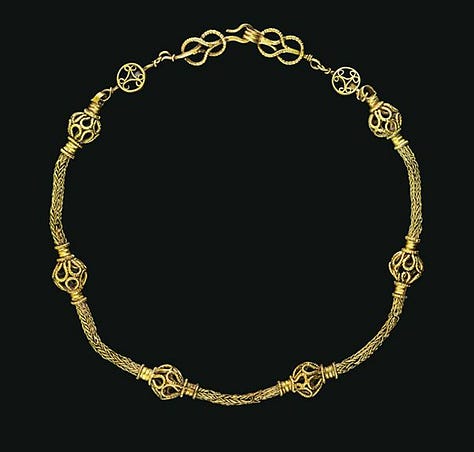
HOW LOOP-IN-LOOP CHAINS ARE MADE
The process of making this style of chain is simpler than you might think, though it does require some level of skill with heat:
A long, thin wire of 18kt-24kt gold or fine silver is bent around a dowel, forming a coil that is then cut into jump rings. Next, using a flame, they are fused at the seam. Each fused ring is then folded over a dowel, pinching the sides in. Finally, each bent link is joined together by weaving the ‘figure-8’ shapes, creating a fluid chain.

I learned how to make this type of chain in fine silver while in school, and it was so satisfying to make. Even though I made it 10 years ago, I still wear it almost every day!
You can watch a video showing the full process here.
ASIA
I wanted to touch on some of the chain styles coming out of East and Southeast Asia. For Part I, I will cover Korea and Indonesia. I also plan on exploring chains in India in Part II, since most of the images I could find are of chains made in the 19th century and onwards.
I also wasn’t able to find much visual evidence of historical chain-style necklaces from other regions, particularly in Africa and South America, which is why they aren’t included here. Many cultures from both continents have incredibly rich traditions of beaded jewelry, using gold, stone, and glass, which I plan to cover in a future article.
THE SILLA KINGDOM OF KOREA: 57 BC–935 AD
It’s believed that gold jewelry from the Silla Kingdom was worn by royalty mostly in rituals and burial practices. They utilized techniques such as granulation and filigree, believed to have been brought over through the Silk Road.
They created a chain variation unlike any other we’ve seen, dangling many little granulated leaf-shaped charms from a loop-in-loop style chain, creating a stunning texture that would glitter in the sunlight, as seen in the image below of the earrings in the middle.
They also crafted elaborate gold belts with multiple chain styles, seen in the third image below. These belts were adorned with carvings of fish, phoenixes, and gogok — a comma-like shape, along with practical items like pliers, knives, and tweezers. The belt in the third image below once belonged to a queen, discovered in the north mound of Hwangnamdaechong Tomb in Gyeongju.
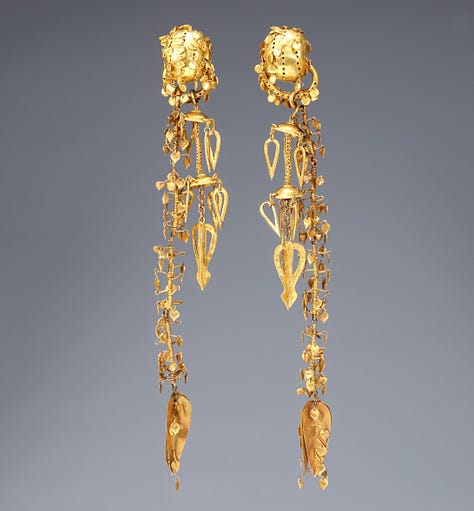
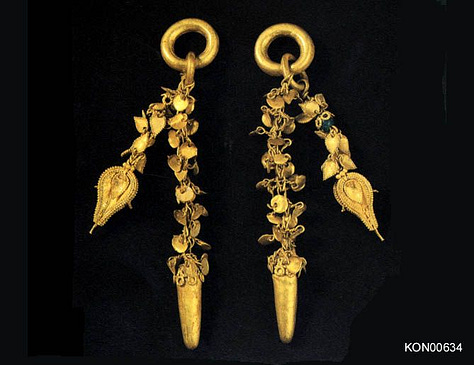
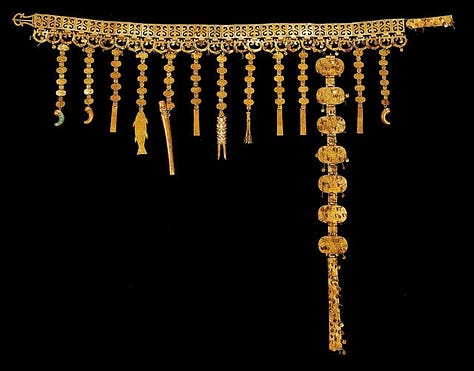
INDONESIA: JAVANESE PERIOD 8th-10th CENTURIES AD
Loop-in-loop style gold chains gained popularity in Indonesia during the Javanese period. The style and techniques for making the chain were most likely brought to them through trade routes by way of India. They added their previously established goldsmithing techniques and incorporated motifs such as flora and fauna, boats, and crescents, representing things like fertility and good fortune, while touching on Hindu-Buddhist mythology and philosophical themes.
Gold chains were worn as symbols of social status and wealth. There were even laws in place that prevented anyone other than social elites or royalty from wearing them. Chains were also worn in rituals and events like weddings and funerals.
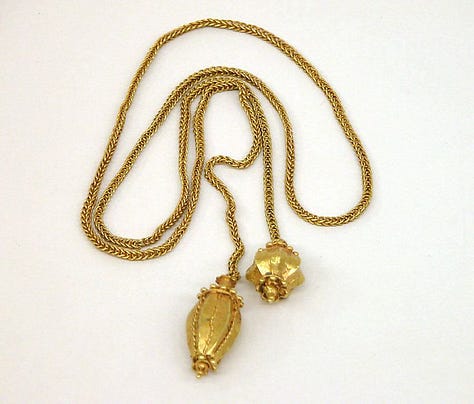
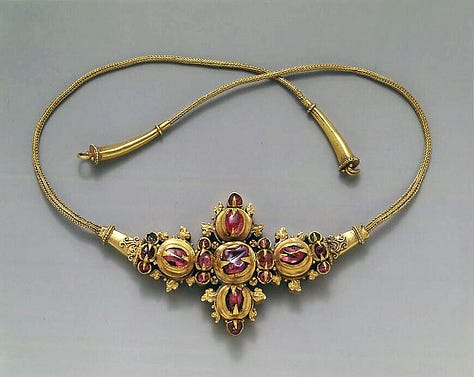

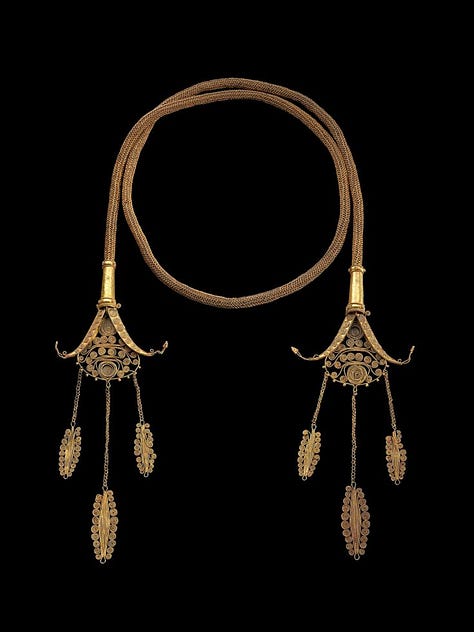


MIDDLE AGES IN EUROPE: 500-1500 AD
In the later Middle Ages, thick, heavy chains called livery chains became popularized. They were typically given as gifts by royalty, nobles, and the wealthy to their close friends, servants, and political supporters, and were often paired with pendants, called livery badges, which denoted their affiliations.
An S-shape link grew in popularity, and could be combined with other symbols like bows, or letters to create alternating links. These were most likely either die-cut or carved in wax and then cast. The meanings of the letters could be mysterious, as they were only known by the wearer.
A fun example is shown below in the first image of the livery collar with alternating links of “S” & “M”. It could be assumed that the initials represent the name or names of the person who wore it, for a married couple, or a noble house. It could have represented Sancta Maria for the Virgin Mary, or even a motto, such as “souvent me souvient”, meaning “remember me often”. The ambiguous meanings surely added to the drama and intrigue of court life.
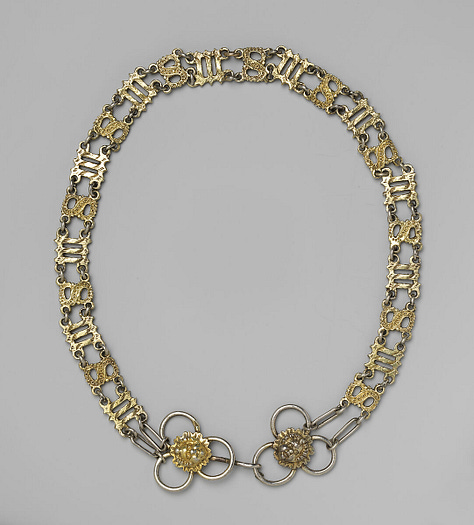

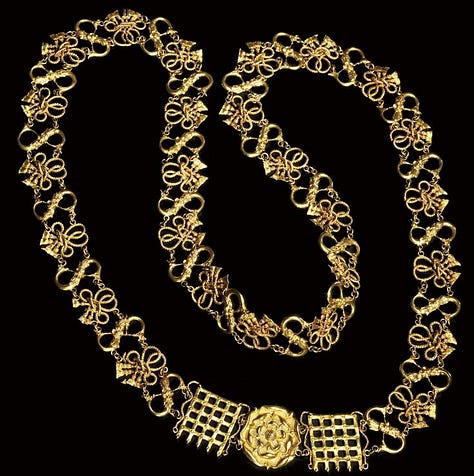
A well-known order called The Golden Fleece is one of the best-preserved livery style chains today. They were given out in abundance by the King of Spain and were one of the most prestigious and historic orders of chivalry in the world at the time.
The order is in existence today, with pendants still being gifted to royalty and individuals for their contributions to society, remaining an iconic symbol. The sheep pendant that represents the order has also been recreated by many contemporary jewelry designers.
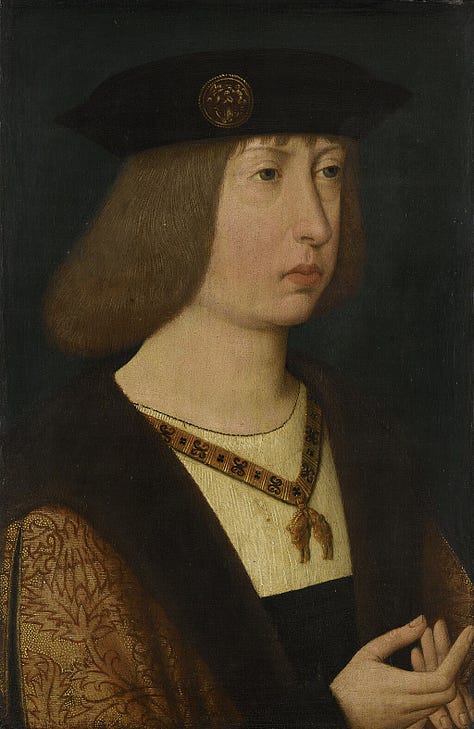


IN SUMMARY
Beginning with the loop-in-loop style that spread across the Middle East, to North Africa, up through Europe, and to the East in Asia, it remained a common style for almost four thousand years. Eventually, cable-style chains rose to popularity during the Byzantine era, and finally, evolved into more elaborate links with carved and cast components in the Middle Ages.
That concludes part I! In part II, I will cover the Renaissance, Georgian, and Victorian eras, through the 20th century, and today. I hope you liked reading about the Ancient history of chain, and feel free to support and subscribe if you’d like to learn more about jewelry history!
Let me know which chain you love best in the comments below!




I really liked the Byzantine chain with a cross and little amphoras, but they are all stunning. I was surprised by the intricacy of the Korean chains too.
so interesting! loved reading about this, there are so many stunning jewelry pieces out there. thanks for sharing your knowledge! will be reading the rest of the parts